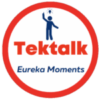
Project Readiness Activities on Initial client contact
Project Readiness Activities
Starting any project by the project manager begins with Client Contact to ascertain the project readiness. This can be in a formal way – by sending an email to request a start date and to understand the preparedness of the client to begin the project. This is turn initiates a phone call where various project details are discussed informally. The conclusion of this step should provide the PM with a start date, project location, and a plan for coming onto the client site or starting the project remotely.
Logistics
Here is the list of logistics that need to be discussed with the client as part of project readiness activities
Project Scope and Objectives
Define the project’s scope, objectives, and expected outcomes. As part of the project readiness ensure that the client has a clear understanding of what they want to achieve.
Project Requirements
Document and validate all project requirements, including functional, technical, and non-functional requirements.
Budget and Resources
A key step to project readiness is to discuss the project budget and the availability of financial resources upfront. Ensure that the client has allocated sufficient funds for the project.
Identify the key project stakeholders and their roles. Determine if the client has the necessary internal resources or if external resources are required.
Timeline and Milestones
Establish project timelines and milestones. Ensure that the client is aware of the project’s duration and key delivery dates.
Risk Assessment
Conduct a risk assessment to identify potential risks and challenges. Discuss risk mitigation strategies and the client’s willingness to address these risks.
Technology Stack
Determine the technology stack and infrastructure needed for the project. Ensure that the client has the required hardware and software in place or is willing to procure them.
Data and Access
Discuss data requirements, data sources, and data access permissions. Again, as part of project readiness ensure that the client can provide the necessary data for the project.
Regulatory Compliance
Check if there are any industry-specific regulations or compliance requirements that need to be followed. Ensure that the client is aware of these and is prepared to comply. This is a key aspect for project readiness as it has severe repercussions both from an audit and governance standpoint.
Communication and Reporting
Establish a communication plan, including regular project status updates, meetings, and reporting mechanisms.
Change Management
Discuss how changes to project scope or requirements will be managed and documented. Ensure the client understands the potential impact of changes on timelines and budgets.
Testing and Quality Assurance
Clarify the client’s role in user acceptance testing (UAT) and quality assurance processes. Ensure they are prepared to provide feedback and test the deliverables.
Training and Documentation
Determine if end-user training is required and plan for it. Discuss documentation needs for the project.
Legal and Contractual Agreements
Review and finalize the project contract, including terms and conditions, payment schedules, and intellectual property rights.
Project Governance
Establish project governance and decision-making processes. Clarify who has the authority to make project-related decisions.
Client’s Vision and Expectations
Ensure that the client’s vision aligns with the project’s goals and objectives. Address any discrepancies in expectations.
Escalation Procedures
Define escalation procedures for resolving conflicts or issues that may arise during the project.
Client Responsibilities
Clearly outline the client’s responsibilities, such as providing feedback, making timely decisions, and adhering to project timelines.
Dependencies and Third-Parties
Identify any external dependencies or third-party services required for the project. Ensure that these dependencies are well-understood and managed.
Exit Strategy
Discuss what happens after the project is completed, including maintenance and support arrangements.
Client Commitment
Ensure that the client is fully committed to the project and understands the importance of their active involvement throughout the project’s lifecycle.
Collect background documentation
As part of the project startup, background information and documentation needs to be collected both for reference. Here is a partial list of documentation you should collect before the project starts:
Business Requirements and Objectives
Collect documents that outline the client’s business objectives and the specific goals they aim to achieve through the IT project. This could include business plans, strategic documents, or executive summaries.
Existing System Documentation
If the project involves enhancements or integrations with existing systems, gather documentation related to those systems. This may include system architecture diagrams, data models, user manuals, and any relevant source code.
Regulatory and Compliance Documents
Identify any industry-specific regulations or compliance requirements that the project must adhere to. Collect relevant legal and compliance documents, such as industry standards, government regulations, or certifications that the project needs to meet.
Technical Infrastructure Information
Obtain details about the client’s current technical infrastructure, including server specifications, network diagrams, software licenses, and information about third-party services or APIs that the project may interact with.
User and Stakeholder Profiles
Create profiles or personas for the end-users and key stakeholders involved in the project. Understand their needs, preferences, and pain points. This information helps in designing user-friendly solutions.
Project Documentation
Review any project-related documentation that has been prepared prior to the project kickoff. This could include project charters, statements of work (SOW), project plans, or proposals.
Once you complete these steps the project is ready to start. Now you can start to work on the project charter and other processes.
Authored by Vijay Chander – All rights reserved 2023



